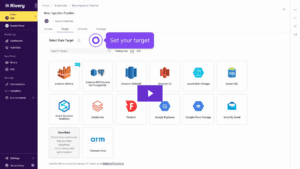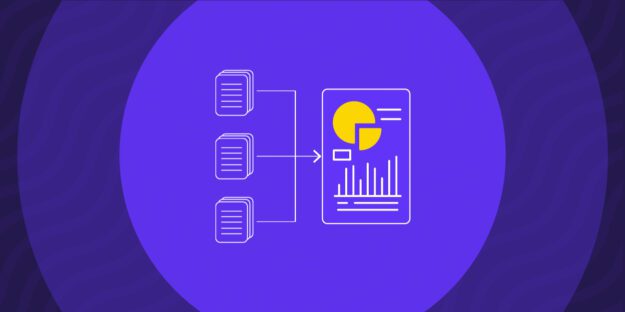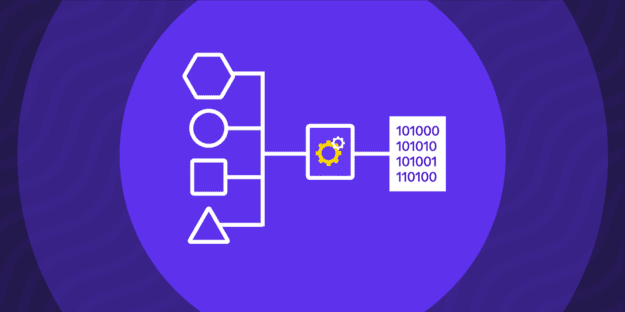Data migration can be daunting, especially when dealing with large volumes of data. It’s a massive undertaking, riddled with potential pitfalls and hiccups.
Yet, it’s an essential task, especially in a world where data is king. Whether it’s due to a system upgrade, server change, or a move to the cloud, data migration is inevitable for most businesses.
The complexity of data migration is often underestimated, and issues may arise due to differences in data formats, incongruities in database architectures, or inconsistencies in data quality.
To ensure a successful data migration project, it is crucial to have a plan in place. This comprehensive guide provides a valuable and practical resource, including a free downloadable checklist template that you can use for your own data migration projects.
Free Data Migration Checklist Template
Ready to make your data migration projects seamless? You can access and download our free Excel checklist template by clicking on the link provided.
You can customize the template to match your specific project requirements, adding or removing checklist items as necessary. This ensures that you have a data migration audit checklist that is tailored to your unique use case.
Data Migration Overview
Before getting into the details of the checklist, let’s briefly go over what data migration is and why it’s important. Data migration is the process of transferring data from one system or format to another.
It involves moving large volumes of data while maintaining its integrity and ensuring that it remains accessible and usable in the new environment.
Data migration is a critical aspect of any IT project, especially when it involves upgrading systems or moving to the cloud.
It allows businesses to modernize their technology and processes, improve data storage and accessibility, and ultimately enhance their overall efficiency.
The Role of Data Migration in Data Integration
Data integration and data migration are often used interchangeably, but they are two different processes. Data integration involves building data pipelines and creating a centralized repository for all data sources.
Data migration, on the other hand, involves moving existing data to a new location or format.
Data migration is a fundamental pillar of data integration, serving as the backbone that facilitates the seamless transfer and consolidation of data between different systems or platforms.
In the context of data integration, migration is not merely about moving data, but ensuring its accuracy, consistency, and usability in its new environment.
This process plays a pivotal role in optimizing business operations, making accurate data-driven decisions, and achieving strategic goals.
Without effective data migration, data integration efforts can be riddled with inaccuracies, leading to misinformed decisions and potential operational disruptions. Hence, recognizing the importance of data migration is paramount for any successful data integration endeavor.
Common challenges in data migration
Accurate and reliable data migration is crucial for organizations, but the process comes with its set of challenges:
Data Quality: Migrating inaccurate, outdated, or duplicate data can lead to poor decision-making. Ensuring data cleanliness before migration is essential but challenging.
Data Loss: During migration, there’s a risk of data being lost, especially if there are compatibility issues between the source and target systems.
Data Volume: The sheer amount of data can be overwhelming. Migrating vast amounts of data requires substantial resources and poses risks if not managed properly.
Complex Data Structures: Different systems may have varied data structures or formats. Transforming and mapping these data structures for migration can be intricate.
Legacy Systems: Older systems might not easily interface with modern technologies or might not support efficient data extraction methods.
Data Security: Ensuring that data remains secure during migration, particularly when moving across networks or to the cloud, is paramount.
Compatibility Issues: Migrated data might not be immediately compatible with the target system, requiring additional transformations and validations.
Downtime Concerns: Some migrations might require system downtimes, which can disrupt business operations.
Budgetary Constraints: Comprehensive data migration, especially for large enterprises, can be costly. Balancing quality and cost is a frequent challenge.
Lack of Expertise: In-house teams might not have specialized skills for complex migrations, leading to potential errors or oversights.
Regulatory Challenges: For certain industries or data types, migrations need to adhere to strict regulatory guidelines, adding another layer of complexity.
Given these challenges, it becomes evident why a structured approach, combined with the right tools and expertise, is necessary for any data migration initiative.
The Comprehensive Data Migration Checklist
1. Data Assessment: Evaluating Data Sources and Quality
This step involves understanding the data you want to migrate, its formats, volume, and quality. Here, the main task is to assess data sources, identify potential issues, and plan for their resolution.
Identify Data Sources: Make a list of all data sources, including databases, applications, and files that will be involved in the migration.
- Catalog every data source that needs migration. This encompasses databases, flat files, cloud repositories, third-party APIs, and even legacy systems.
- Record data source details such as types of data, size, formats, and any custom fields or attributes.
- Determine the criticality of each data source to prioritize migration.
Conduct Data Profiling: Dive deep into your datasets, identifying patterns, anomalies, and structures.
- Profile each data source to understand its quality, structure, and relationship with other sources.
- Identify any data inconsistencies, missing values, or duplicate records that need addressing before migration.
- Review data dependencies and relationships between sources to avoid breaking them during the migration.
- Assess issues such as missing values, missing values, frequent patterns, duplicates, and anomalies.
- Identify and exclude unnecessary historical or redundant data segments
- Build a detailed scoping report that outlines the data landscape and summarizes potential issues.
Data Cleanup: Clean up and standardize data to ensure accuracy before migration. This step is crucial if the data is coming from multiple sources.
- Run data quality checks on each source to identify any inconsistencies, errors, or gaps. Address these issues
- Develop a process for addressing any data quality issues
- Establish data quality rules.
- Plan for data cleansing processes.
- Set up validation rules to ensure data integrity post-migration.
Data Mapping: Define the relationship between the source and target data to ensure successful migration.
- Define mapping rules for each data element, including field names, formats, and any transformations required.
- Identify transformation requirements and logic for each field.
- Create a mapping document that outlines how fields will be mapped from the source to the target system to serve as a reference during the migration process.
- Create test cases to validate data accuracy post-migration against these mappings.
Assess Data Dependencies: Identify data dependencies and relationships between different fields, tables, or entities.
- Scrutinize relationships and dependencies within the data. Recognize foreign key relations, hierarchies, and linked records to ensure seamless migration.
- Understand how changes in one field will affect related fields post-migration.
- Develop a plan to address any data dependencies to avoid errors during migration
Data Volume Analysis: Determine the volume of data to be migrated and plan for its storage and movement.
- Assess the volume of data that needs migration from each source.
- Identify any limitations in terms of storage capacity, network bandwidth, or infrastructure and plan accordingly.
- Determine the most efficient method for moving the data based on its size, location, and format.
- Define scalability requirements and potential performance bottlenecks. Large datasets might require specialized tools, incremental migration, or increased infrastructure resources.
2. Migration Planning: Establishing a Data Migration Strategy
This phase involves creating an overall plan for the migration process and allocating resources accordingly.
Project Scoping: Define project objectives and deliverables to establish clear guidelines for your team.
- Define Objectives: Identify why you are migrating data and what you hope to achieve through the process.
- Understand the required technology, timeline, and potential risks.
- Determine the cost and likely outcome of migration.
- Set performance benchmarks for the migration process.
Determine Project Delivery Structure: Decide how the project will be executed and assign roles and responsibilities to ensure a smooth migration process.
- Identify who will lead the project, manage data preparation, perform testing, and handle communication with stakeholders.
- Establish timelines for data cleansing, mapping, testing, and go-live activities.
- Define processes for tracking progress, reporting issues, and escalating critical tasks.
Establish a Timeline: Outline key milestones and timelines for each phase of the migration process.
- Avoid basing estimates on guesswork. Use pre-migration impact assessment for accurate cost and resource analysis.
- Define project phases, from data assessment to testing and validation.
- Allocate resources and assign responsibilities for each phase.
- Plan for contingencies and potential delays in case of unforeseen issues or complications.
- Define precise workflows for reaching milestones.
- Address resource gaps and ensure clarity in task sequence.
Conduct Pre-Migration Impact Assessment: Understand the effect of data migration on existing systems and processes.
- Understand the impact of migration on business operations, including potential downtimes and risks.
- Identify any dependencies or integrations that might be affected by the migration process.
- Proactively map out potential risks—system downtimes, data corruption, or transformation errors—and design backup and contingency plans.
Select Migration Methodology: There are different ways to migrate data depending on the scale, complexity, and urgency of your project.
- Determine whether a one-time or incremental migration approach is more suitable for your organization.
- Define a strategy for data migration, taking into account factors such as data volume, complexity, and downtime constraints.
- Decide between different approaches—big bang (all data at once), phased (section by section), or trickle (continuous, incremental) migration—depending on data size, complexity, and organizational preferences.
Migration Tool and Platform Assessment
- Choose the method for data extraction: utilizing ETL (Extract, Transform, Load) or ELT (Extract, Load, Transform) processes.
- Determine if existing tools/frameworks will be used or if new tools need to be procured.
- Consider using specialized tools or third-party services for complex migrations.
Allocate Resources: Assign the necessary resources and budget for each phase of the migration process.
- Identify staffing needs for each task, including data preparation, mapping, testing, and go-live activities.
- Determine when each resource is required and plan for resource engagement at appropriate project phases.
- Allocate sufficient time, budget, and infrastructure resources to ensure a smooth migration process.
- Consider training or hiring additional staff if needed.
- Have software and tools in place.
- Clearly define job descriptions for team members.
- Outline tasks, deliverables, and dependencies.
- Inform business and IT communities of their involvement.
Communication Plan: Communicate with stakeholders and establish a communication plan to keep all parties informed throughout the migration process.
- Identify stakeholders who need to be involved in the project and define their roles and responsibilities.
- Create a communication plan that outlines how and when updates will be shared, what information will be communicated, and who is responsible for disseminating it.
- Build a stakeholder register – a comprehensive list of all stakeholders with their roles, contact details, and communication preferences.
- Establish a consistent communication channel among IT teams, data analysts, business units, and decision-makers to ensure everyone is on the same page.
- Schedule sessions with data stakeholders and technical teams to address concerns and manage expectations.
Develop training documentation: Ensure that all stakeholders receive the necessary training to use data migration tools and processes effectively.
- Develop training materials for employees or teams who will be involved in the migration process.
- Provide hands-on training sessions for staff on how to use new tools or processes.
- Include user manuals, FAQs, and other resources as needed.
Security check-ins: Ensure data security measures are in place and regularly checked throughout the migration process.
- Consider using encryption methods, data masking, or other techniques to ensure sensitive data is protected during the migration process.
- Review security protocols for any third-party tools or services being used for the migration.
- Conduct regular audits and check-ins to identify any potential vulnerabilities and address them promptly.
- Obtain formal security agreements from governance teams.
Testing and Validation: Perform thorough testing on data before and after migration to ensure accuracy and functionality.
- Develop test plans and scenarios for validation of the migrated data.
- Test data mapping, transformations, and other processes to identify any errors or issues.
- Validate data accuracy and completeness by comparing it with the source system.
- Conduct user acceptance tests (UAT) to ensure that the data meets business requirements and functions correctly in the new system.
Data Go-Live Plan: Establish a clear plan for transitioning to the new data environment.
- Define specific go-live activities and assign responsibilities for each task.
- Develop a contingency plan in case of any issues or delays during go-live.
- Conduct mock runs or rehearsals before the actual go-live to identify any potential issues and address them beforehand.
Policy and Document Creation: Create policies and documents to guide future data migrations and ensure consistency.
- Develop a documentation template for future reference, including processes, tools used, key learnings, and potential risks.
- Determine responsibility for data quality rules sign-off.
- Establish escalation procedures.
- Create a policy document outlining guidelines and best practices for data migration in the organization.
- Share the documentation with relevant stakeholders and make it easily accessible for future use.
Set up the environment: Prepare the target system environment for data migration.
- Ensure the target system has sufficient storage, processing power, and network connectivity to accommodate the migrated data.
- Configure the necessary access permissions and security measures in the target system.
- Test integration with other systems or applications to ensure seamless functionality after go-live.
- Ensure a secure environment, especially if involving 3rd parties.
- Make sure that your migration environment is isolated from production until it’s time to switch over. This prevents potential disruptions.
Set up Reconciliation Procedures, Backup, and Rollback Plans
- Ensure there’s a backup of the original data.
- Before fully switching to the new system, consider running both systems in parallel. This allows for real-time comparison and validation.
- Once migration is done, have procedures in place to reconcile and verify that the data in the source and target systems match.
- Determine backup procedures in case of data loss or errors during migration.
- Establish a rollback plan in case any issues arise, allowing for a quick reversal to the previous state if needed.
- Determine how long the old data/system needs to be archived.
- Define the methods and storage solutions for archiving.
Pre-migration validation: Before the actual migration, test your data movement process and ensure that it can handle the expected data volume, including any data spikes.
- Before the actual migration, conduct dry runs. Use subsets of data to test and validate migration strategies.
- Set up a test environment that mirrors the production environment as closely as possible.
- Use sample data to test the migration process and identify any potential issues or bottlenecks.
- Identify any discrepancies and fix them before performing the full migration.
- Ensure that all tools and processes involved in data transfer can handle the expected data volume without causing delays or errors.
3. Execution: Actual Data Transfer and Transformation
This step is the actual data transfer process, which involves:
- Data Extraction: Extract data from the source systems using the chosen method, whether ETL or ELT.
- Data Transformation: Undertake necessary data manipulations, ranging from simple format changes to complex data cleansing and enrichment operations.
- Data Loading: Seamlessly load the transformed data into the destination system, considering techniques like batch or real-time loading.
- Logging and Tracking: Maintain meticulous logs to monitor the migration’s progress, errors encountered, and transformation applied, and to support potential rollbacks.
Real-time Monitoring: Monitor the data transfer process in real time to identify any issues or errors.
- Use monitoring tools or scripts to track progress, identify bottlenecks, and ensure timely completion of the migration.
- Monitor for any data integrity issues or errors and address them promptly.
- Keep all relevant stakeholders informed of the progress and any potential delays.
Logging & Monitoring: Track and monitor the data migration process to identify any issues and ensure a smooth transition.
- Set up logging systems to track the progress of data migration.
- Monitor key metrics such as data transfer rates, error logs, and system downtime to identify any potential problems.
- Establish alerts or triggers for critical errors or delays that may require immediate attention.
4. Validation: Ensuring Data Accuracy and Completeness
Post-migration validation: After the data is transferred, conduct a final round of testing and validation to ensure accuracy and completeness.
Compare migrated data with a sample set from the source system to confirm that all records were accurately transferred.
- Validate data integrity by running queries on relevant fields and comparing results between the source and target systems.
- Conduct user acceptance tests (UAT) to ensure that the data meets all business requirements and functions correctly in the new system.
- Deploy comparison tools or scripts to verify that the source and destination datasets are consistent and in sync.
- Run operational scenarios, transactional tests, and end-user workflows to ascertain the data’s functionality in its new environment
Data Reconciliation: Perform a final reconciliation of data between the source and target systems.
- Compare the migrated data with the original source data to ensure completeness and accuracy.
- Identify any discrepancies or missing records and address them promptly.
- Confirm that all required fields were successfully transferred and that the data is complete and consistent.
Stakeholder Review: Share the results of the data reconciliation and validation with relevant stakeholders for review.
- After migration, schedule a meeting or presentation to share the findings and results of the data migration process.
- Gather feedback from stakeholders to refine future migration processes.
- Provide detailed reports and documentation on the data reconciliation, validation, and any issues encountered during the migration.
- Address any concerns or questions raised by stakeholders and provide further clarification if needed.
5. Post-Migration: Monitoring and Optimization
Continuous Monitoring: Monitor the newly migrated data and systems for any issues or errors.
- Set up ongoing monitoring processes to track the performance and functionality of the newly migrated data.
- Establish alerts or triggers for critical errors that may require immediate attention.
- Monitor key metrics such as system downtime, data accuracy, and user feedback to identify any potential issues.
- Address any problems or issues promptly and seek ways to optimize performance.
Data Cleansing and Optimization: Continuously improve and optimize the migrated data.
- Use data cleansing tools or scripts to identify and fix any inconsistencies or errors in the newly migrated data.
- Regularly review and update data quality measures to ensure the accuracy, completeness, and consistency of the migrated data.
- Seek feedback from end-users and stakeholders to identify areas for improvement and optimization.
- Utilize data analytics tools to gain insights into the performance of the migrated data and identify opportunities for further optimization.
Document every aspect of the migration process. This includes tools used, mapping logic, challenges faced, and how they were addressed.
- Maintain a detailed log of all data transfer processes, including any errors or issues encountered.
- Document the data mapping process and any transformations applied to achieve migration success.
- Share the documentation with relevant stakeholders for their records and future use.
Using a Data Integration Dedicated Platform
Data migration is a complex and challenging process, demanding significant planning, coordination, and execution efforts. To help streamline the process, we recommend using a data integration platform.
You can streamline this complex process with Rivery.io, a powerful and user-friendly data integration platform designed to make your data migration seamless and efficient.
With an extensive list of integrations, including cloud databases, flat files, SaaS applications, and more, Rivery.io offers a comprehensive solution for all your data migration needs.
Additionally, the intuitive interface and automation capabilities enable a smooth and efficient migration process, significantly reducing the risk of errors and data discrepancies.
Minimize the firefighting. Maximize ROI on pipelines.





